Panasonic Lumix DMC-FT3 Review
Panasonic Lumix DMC-FT3
This 'toughened' camera features Full HD video, GPS antenna, 3D shooting mode and is waterproof, shockproof, freeze proof and dust proof.
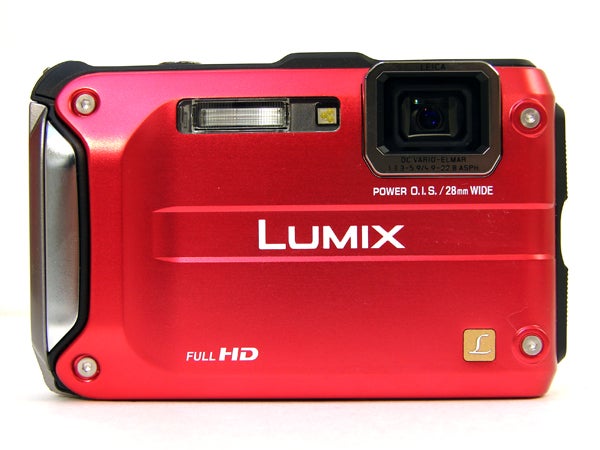
Verdict
Pros
- Shock, dust and waterproof
- Onboard GPS and compass
- 3D shooting mode
Cons
- Image quality only so so
- Not the most glove friendly buttons
- No cover for the lens
- No manual mode
Key Specifications
- Review Price: £299.00
- Shock, dust and waterproof
- GPS, compass and 3D shooting mode
- 12.1 megapixel sensor
- 4.6x zoom lens, 28-128mm equivalent
Generally speaking, electronic gadgets and systematic abuse don’t mix all that well. Looking to change all that and keep on taking pictures even after it’s been dropped, dunked or frozen is the 12.1 megapixel Lumix DMC-FT3 from Panasonic, new for 2011 and successor to the FT2. This ruggedised camera recalls the old Konica Minolta Dimage range from 2004 in terms of boxy design, internally folded zoom lens (here comprising 10 elements) and the fact that it’s available in red or blue. It also mirrors its closest current rival in the Olympus Tough compacts via its ‘armour-plated’ outer surfaces and chunky catches to avoid unwanted ingress from the elements. There’s even on-screen warnings and prompts each time you switch it on to make sure you’ve done the equivalent of battening down the hatches properly, thus preventing the camera coming a-cropper through carelessness if you take it for a swim.
While it looks outwardly tough the FT3 fortunately also has the under-the-bonnet credentials to match. Its airtight body is waterproofed to a depth of 12 metres though we didn’t have the opportunity to test that out, is shock proofed against a drop from two metres in height (more on which later), freezeproof to -10°C and is furthermore dust proof. And, like the most recent Olympus model, the TG-810, this time round Panasonic has also shoehorned in a GPS antenna, as already found in its TZ high zoom series. This gives real-time information on the location at which the shot is being taken; the place name displayed ticker-tape fashion along the bottom of the backplate LCD screen should you forget where you are. Panasonic claims said info covers 203 countries for worldwide use, and more than a million landmarks. What’s more it appears to work, and managed to pick out our local National Trust property at least. Useful perhaps if you’re abroad and haven’t bothered to buy a guidebook to otherwise discover what’s what, or of course want to plot the route of your travels via Google maps or the social media of your choice later.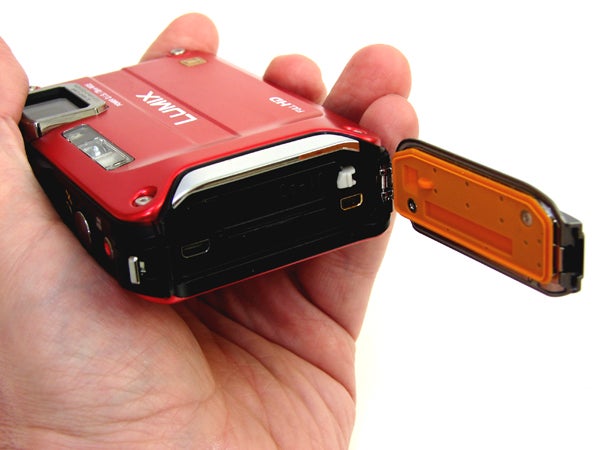
Like its Olympus competitor, the FT3 features a built-in compass, and adds an altimeter and barometer to respectively display and record orientation, altitude, and pressure, on land as well as underwater. The FT3’s other headline features include Full HD video recording in AVCHD compression format with useful wind cancelation feature. Like most if not all of the Lumix range now, the capture of video clips is a one-touch process via a dedicated button. It also has an optically stabilised 4.6x zoom, Leica-branded lens with a focal range equivalent to 28-128mm. This makes it both plenty wide enough for landscape and group photos as well as suiting portrait snapshots and being suitable for picking out middle distance objects (truly far away subjects will still require a much longer zoom, which is generally available in a rugged form).
Light sensitivity can be manually adjusted from ISO100 to ISO1600, with up to ISO6400 achievable if selecting High Sensitivity scene mode, albeit with a corresponding resolution drop. So it’s a case of weighing up whether the shot is worth the compromise of an overall softer image.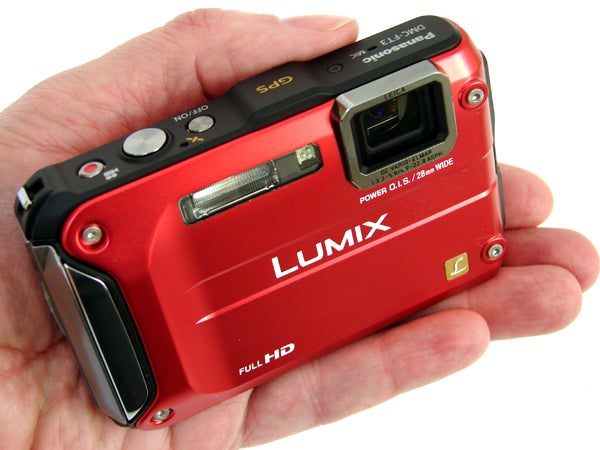
For those wanting to capture the action on the ski slopes or in the pool, up to 3.7 frames per second burst capture is offered at full resolution, which isn’t bad for its class, with the option to up this to 10fps if dropping down to three megapixels. More exciting for some, the camera also features a 3D shooting option, mirroring the Sweep Panorama feature of the latest Sony Cyber-shot and NEX compacts by compositing the final image from a sequence of shots – though here up to 20 individual frames, which is far less than the 100 images utilised by the range topping Sony’s. Like its rival manufacturer, with 3D mode selected, the user simply pans with the camera in the direction of the arrow provided on screen, accompanied by a machine-gun like sample of the shutter firing. The camera automatically generates the end result and saves it as an MPO file. As ever this isn’t actually viewable unless you own a 3D TV, although, as when shooting with the specialist 3D lens for Panasonic’s GF2 and GH2 models, a low resolution JPEG is saved alongside the MPO file for immediate reference.
With a street price of around £300 at the time of writing, whilst not cheap the FT3 feels like fair value if you really do need the added protection it affords .It also looks like decent value compared to its predecessors, given the extras of compass, 3D and GPS. So how does it handle in practice? Read on to find out…
With metal face plate screwed into position at each of its four corners and chunky plastic edging, the Panasonic FT3 has an industrial appearance and feel. It may not be pretty, despite being available in eye catching colours, but it does look up to the job. That said, Sony has managed to create a much more attractive and svelte alternative in the DSC-TX5, which is only slightly less resilient than the FT3. What’s more it incorporates a metal cover which protects the lens from direct knocks and fingerprints. While the FT3 has a recessed and reinforced glass cover to its lens, it’s still preferable to have something non-optical cover the whole lot. 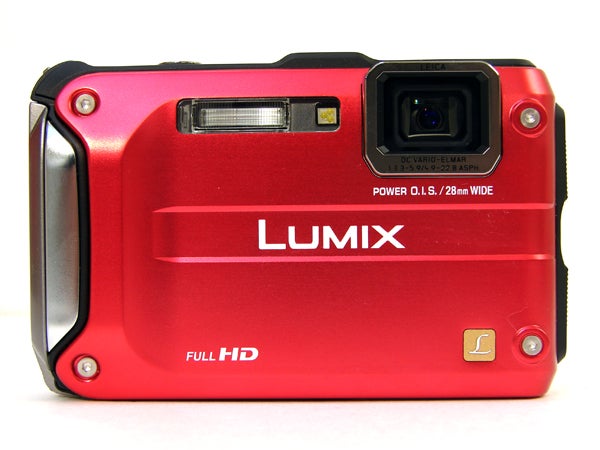
Inadvertently, we tested the FT3’s mettle when our review sample accidentally slipped from our camera bag and dropped a couple of feet onto concrete, before we’d even got going with taking our test photos. Thankfully it survived unscathed.
In the predictable absence of an optical viewfinder, photos and video are composed via a 2.7-inch, 230k dot LCD screen. Thanks no doubt to its need to have a thick reinforced covering, it’s neither the largest nor sharpest we’ve witnessed but is perfectly adequate for its purpose. One particularly subtle advantage is that the brightness automatically adjusts according to the surroundings. 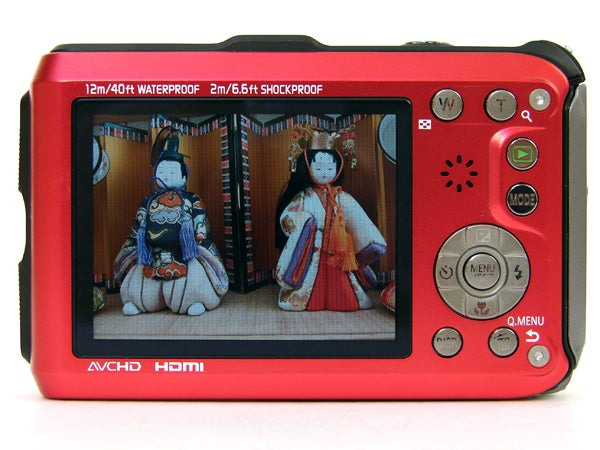
As with most pocket compacts, a raised edge to the faceplate is the only thing provided by way of a grip (which is still an improvement over the flat fronted FT2), and there’s nothing at all at the back for the thumb to rest on when gripped in your right hand. As a result we found our thumb skating over the mode and playback buttons at the rear, which are fortunately slightly recessed to prevent accidental activation. We also found it all too easy to cover the rear speaker with a thumb, though this is obviously much less of an issue when capturing footage.,
Another ergonomics issue comes courtesy the zoom control. Instead of the familiar rocker switch on the top, the FT3 has a couple of individual buttons on the backplate. We found these slightly awkward as the thumb has to dart from one to another when determining your framing; you can’t just quickly ‘toggle’ back and forth as you would with a switch type control. Having said that the internally stacked zoom, which starts out at maximum wide angle setting upon powering up the device, moves steadily and silently through its range in just over three seconds.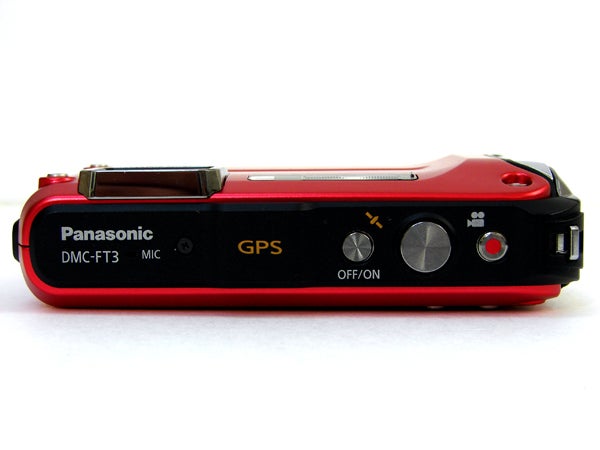
Further questions arise in our minds when it comes to the dropping of the FT2’s mode dial and replacement with an icon-led menu. It provides access to eight record modes. From the top left hand corner we have the default setting of intelligent Auto for reliable snapshot-type operation, then Program Auto (which gives access to a wider range of manually selectable menu options – such as ISO – when you start to drill down into the camera’s features), Sports mode, a dedicated Snow mode, separate Beach and Underwater modes, a more indepth scene mode (with 26 sub menu options), and finally the aforementioned 3D mode.
The other backplate controls comprise the familiar four-way command pad, or cross keys, with central menu/set button. Ranged around this are means of manually adjusting exposure (a modest +/- 2EV), flash settings (On, off, auto plus the usual red eye reduction and slow sync suspects), self timer options (two or ten seconds), plus macro option (AF macro, or macro with digital zoom).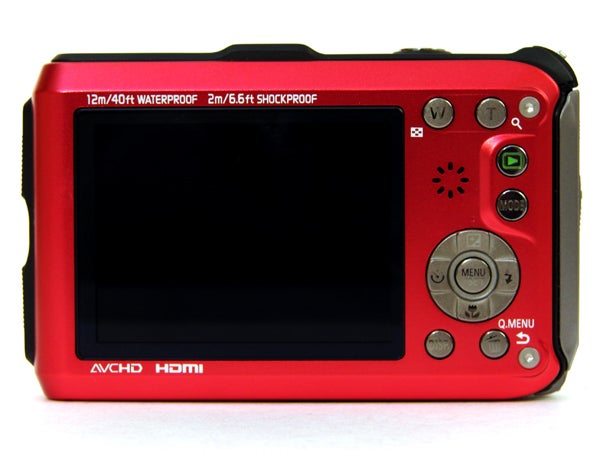
The button we found ourselves pressing the most often though was the Q.Menu (‘Quick Menu’) button, tucked unobtrusively in the bottom right hand corner of the backplate. This gives access to all the key shooting settings – if you have Program mode selected – that anyone might want on a daily basis. These are displayed as a toolbar along the top of the screen, with drop down selections as each option is alighted upon. Thus we get access to two GPS modes (with one for airlines) as well as the ability to either switch that feature on or off, AF modes, white balance, ISO, image resolution settings and the ilk without otherwise having to drill down into the main menu screens (themselves simplistic and easily navigated, to be fair). In other words the Q.Menu provides a very useful shortcut and time saver.
With intelligent Auto mode selected, operation of the FT3 is as un-fussy and straightforward as you’d want it to be when you’re hurtling down a black run, or metres deep under water.
The camera powers up with a press of the recessed on/off button located on the top plate, which again isn’t the best option for ease of use when wearing gloves, but obviously it does at least stop accidental activation. Once successfully pressed, the FT3 readies itself for the first shot in just over a second, which is fast for a compact.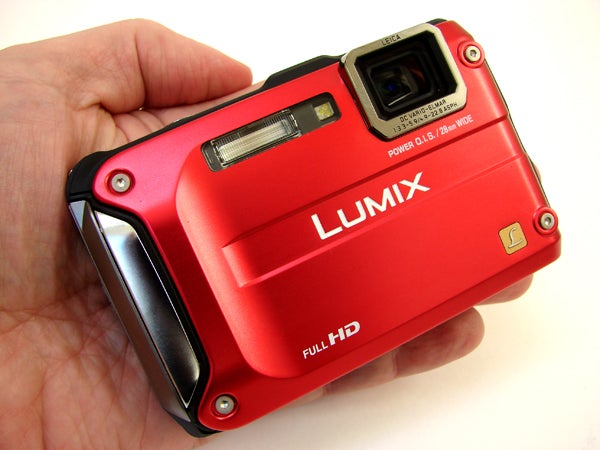
When you’ve arrived at the composition you want and are ready to take the shot, a half press of the shutter release button and focus and exposure is determined near instantly, green AF point highlighted with a beep of confirmation. As with the power up time, we couldn’t really hope for any faster on this class of camera.
Panasonic claims the FT3 makes use of what it calls ‘intelligent resolution’ technology. This apparently intelligently picks out edges, detailed texture areas and soft gradients and applies in-camera sharpening at an appropriate level to each part of the image, enhancing detail while not causing smooth areas of colour to become blocky. In truth we were hard pressed to tell any difference between this camera and any other point and shoot with a quick bit of sharpening applied, either in Photoshop or in-camera. 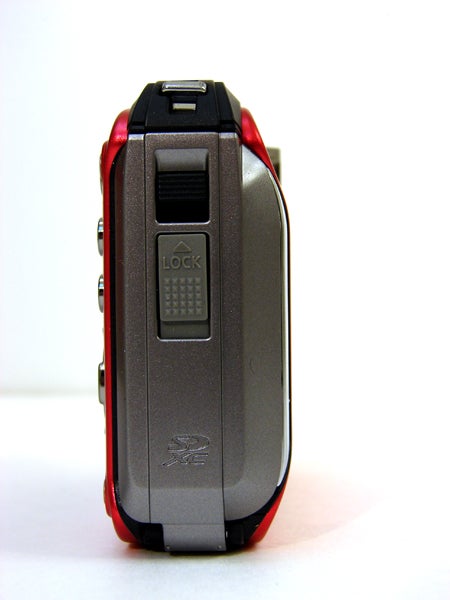
Such technology also enhances the performance of the optional Intelligent Zoom, which virtually extends the zoom ratio by a 1.3x equivalent, in theory delivering slightly better results than your average digital zoom. Again in practice it’s hard to notice a big difference as overall quality from the small folded lens is inevitably not as good as that from a physically larger one – for example that found on Panasonic’s own TZ10 model – with most images appearing somewhat soft. It’s not appalling and certainly is in line with many average compacts but it’s always worth bearing in mind that such cameras seldom produce results you’d want to print large.
The camera is as quick to determine focus and exposure as one would hope. Panasonic claims the auto focus mechanism – the grandly named Sonic Speed AF – is 28% faster than that of its predecessor the FT2. Officially shutter lag is an almost imperceptible 0.005 seconds, while it takes around three seconds for a full resolution JPEG to write to memory. Not the fastest ever but again perfectly acceptable for this class of snapshot camera.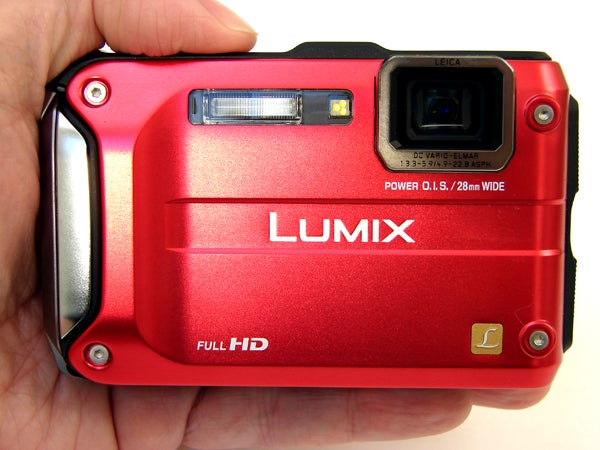
As for low light performance, it’s best to stick to ISO800 and below to avoid noise becoming particularly intrusive and/or visually distracting. The built in flash isn’t the most powerful with a maximum range of 5.6m but it’ll do for more casual shots, and there’s a powerful focus assist lamp as well. As ever, the lack of a full manual mode means it can sometimes be difficult to get a balanced flash-assisted shot but again this is typical for what it at its heart a point and shoot camera – we’ve never understood why manufacturers leave out manual mode, even if it’s buried deep in the menu system.
”’Verdict”’
In terms of default image quality the FT3 may provide similar results to your typical £199 point and shoot then, but for that extra £100 you’re getting additional goodies such as its nigh indestructible construction, GPS which makes this a real tool for the traveller, 3D shooting mode (useful only if you own a compatible TV) and Full HD video clips, so you might feel the extra is worth paying anyway for both peace of mind and added creative flexibility. While we couldn’t quite replicate exactly the full gamut of rugged tests required to take this camera to its limits it certainly survived the few trials we put it under. And based on past experience with the Panasonic FT2, we’re sure The FT3 will be just as true to its hardy word.
Ultimately the FT3 has to be the most feature packed toughened camera we’ve seen to date. We’d suggest there isn’t quite enough to warrant users of recent tough models, such as the Panasonic FT2 and https://www.trustedreviews.com/digital-cameras/review/2010/08/05/Olympus-mju-Tough-6020/p1 Olympus mju-Touch 6020, should consider upgrading but newcomers to the market could certainly do much worse. One thing to consider is the more recently announced Olympus Tough TG-810 could very soon be snapping at its heels. So maybe hold onto your pennies for a few weeks yet before making your mind up.
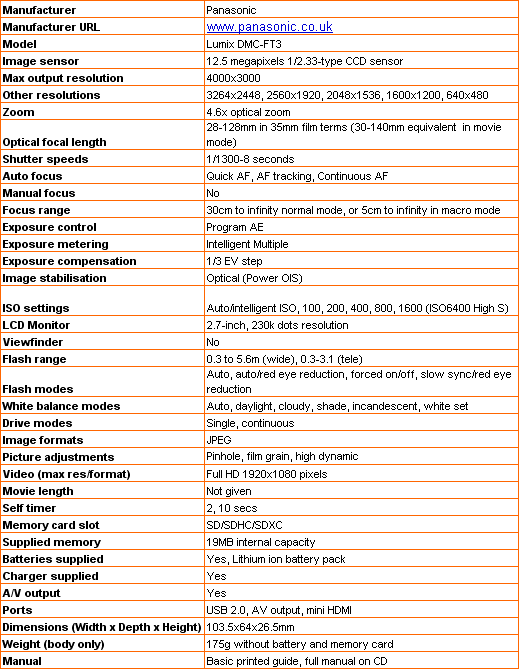
”’As with Panasonic’s Micro Four Thirds compact system cameras, the humbler Lumix DMC-FT3 offers Auto ISO and ‘intelligent’ ISO for those who want to leave the camera to decide, and with commendable consistency. Otherwise manually selectable light sensitivity settings are fairly standard, running from ISO100 up to a modest ISO1600, with the top ISO6400 option only available the camera itself deems it necessary via High Sensitivity mode.”’
—-
—-
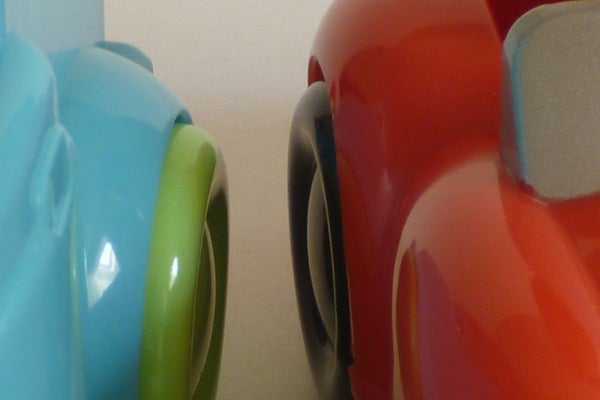
As expected at the lowest ISO100 setting as expected we’re not seeing any noise, though filtered daylight has provided a warmish colour cast. Left to its own devices, the camera’s AF has also automatically focused on whatever is dead centre of frame – here the back wheels of our toy cars.
—-
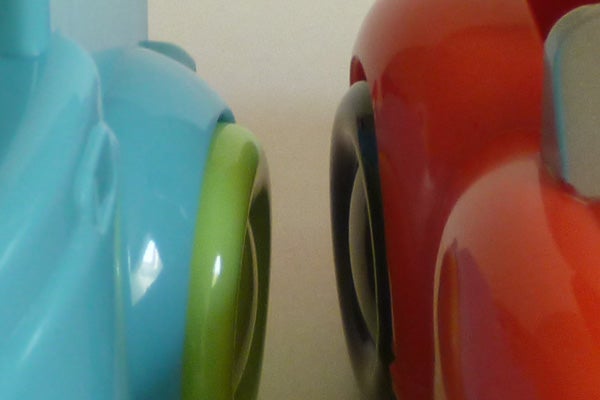
No discernible difference as we up the ante to ISO200, and similarly no image noise to report.
—-
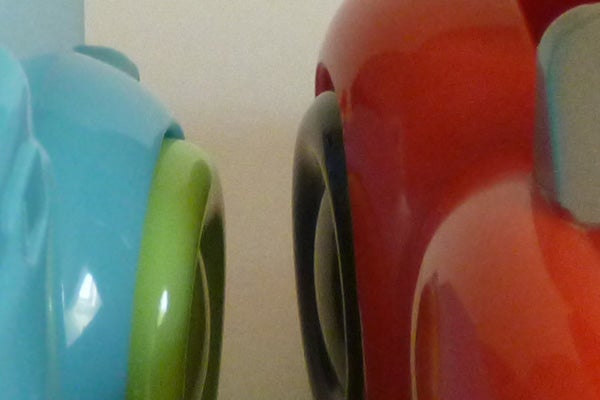
At ISO400, normally the stage at which noise begins to intrude if we’re unlucky we again have a clean bill of health served up by the FT3. Incidentally ISO400 was what the camera itself chose for our test scene when left on Auto ISO.
—-
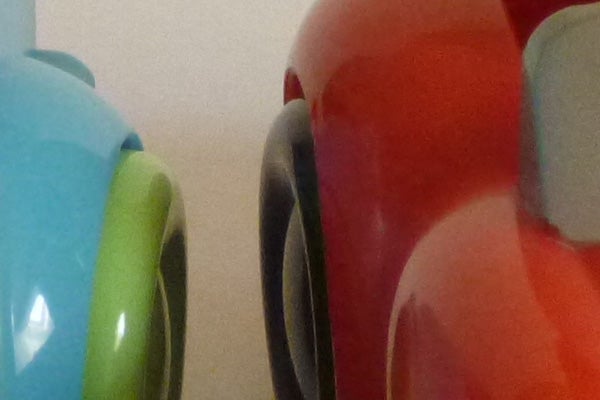
ISO800 and looking at the rear wheels there’s discernibly noise here, but again, it’s hardly at a noticeable level unless you’re cropping into your frame to look for it.
—-
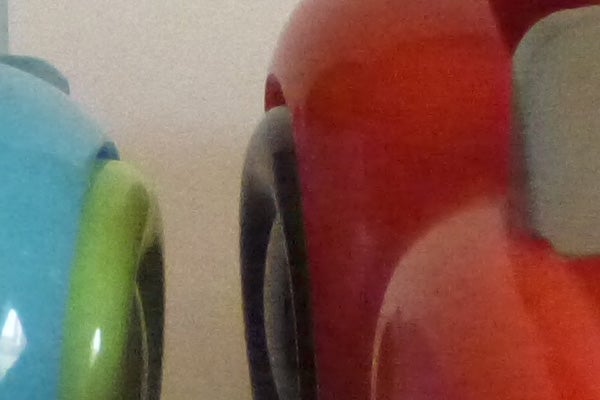
At ISO1600 we’re noticeably losing edge definition and getting a fuzzier, softer image overall, so, as with most point and shoot compacts, the advice is to stick to ISO800 and below if you want to avoid such artefacts.
—-
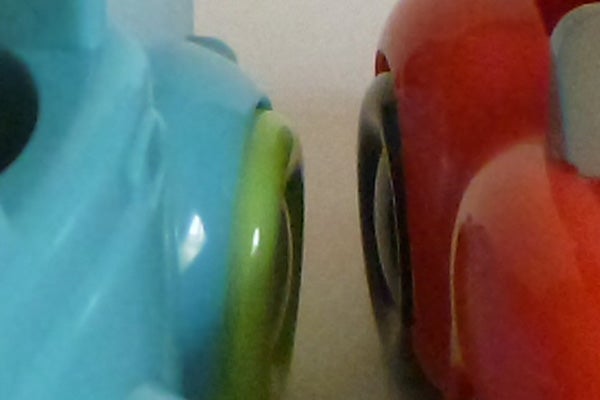
We’ve tried the High Sensitivity mode on our test subjects too, which results in a resolution drop in order to better disguise any increase in noise. OK, so grain has been smudged so isn’t as pronounced as it is at ISO1600, and the shot has a smoother look, but inevitably it’s at the expense of detail so we’d rather stick with ISO1600 anyway when all said and done.
—-
A more general selection of test shots are revealed on this page and next to act as an evaluation of the Lumix DMC-FT3 in a variety of shooting conditions and with different lenses attached, as detailed.
—-

Here’s our usual wide angle test example, here at 28mm equivalent which, although we are losing a little definition toward the edges on close scrutiny, isn’t bad at all. Again the sharpest detail is to be found dead centre of frame.
—-
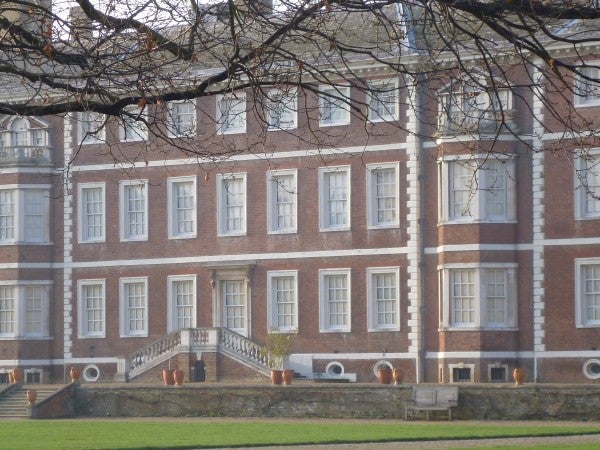
And by way of contrast an image taken at maximum zoom, a fairly modest but for this class of camera perfectly adequate 128mm equivalent. Again a reasonable level of detail is maintained even if the image could do with a boost in terms of contrast to get rid of the late afternoon haze.
—-
Another shot at the telephoto end of the zoom, but of a closer subject. Again, definition is good for a folded lens point and shoot, with sufficient detail displayed for us to be able to pick up on the flaking paint and rust spots in this once more regal insignia.
—-

A handheld night time shot without flash but with the relevant night scene mode selected on the camera. Apart from obvious image noise in the darker areas and blurred subjects because of the necessarily slower shutter speed, sufficient detail has been maintained to more than justify taking the snap in the first place.
—-

A close up macro shot reveals plenty of texture on this piece of stone in a shot that it is hard to find any fault with at all.
—-
”’Here are some general test shots taken with the Lumix DMC-FT3 to give an idea of performance ability when it comes to image quality, dynamic range, colour rendition and focal range.”’
—-

A close up macro shot with the camera reliably set to iA mode taken in the flatteringly golden light of late afternoon to really enhance the natural colours present in the scene. Although we’ve lost a tiny bit of detail, there’s not much wrong here, the Panasonic delivering the warm tones with deft precision.
—-

By contrast this is a daylight interior shot, handheld and without flash. Colour is again pretty spot on and exposure even – the FT3 is not a camera that requires hours in Photoshop to achieve something close to what you were attempting. Most will be pleased with unadulterated JPEGs straight from the camera, as shown here.
—-
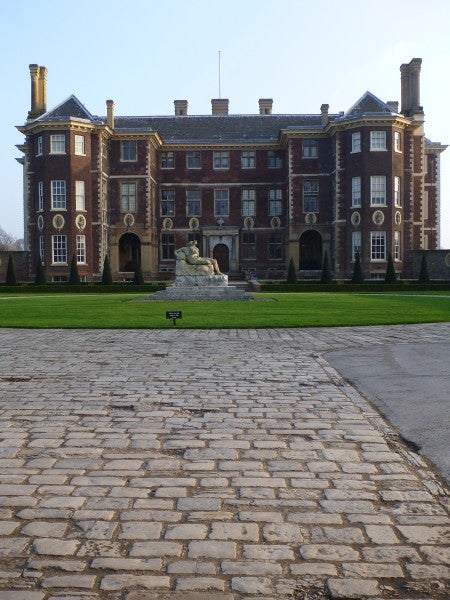
With the camera left on iA shooting mode it has selected landscape mode as being the best fit for this particular scene. Thus we have boosted blues and greens and generally a punchier more vivid appearance to this shot whilst it remains the right side of natural looking.
—-
This swan image was taken in the last light of day as well as handheld at maximum telephoto – hence it’s a little softer than we might have hoped for. Still, the lack of direct sunlight has helped maintain feather detail that is usually lost in burnt out highlights when lighting is stronger.
—-
Trusted Score
Score in detail
-
Value 8
-
Image Quality 8
Features
| Camera type | Digital SLR |
| Megapixels (Megapixel) | Megapixel |
| Optical Zoom (Times) | 12 Xx, 4.6 Xx |
| Image Sensor | CCD |
| Image Stabilisation | Optical |
| LCD Monitor | 3 in, 2.7 in |
| Flash modes | Auto Flash, Flash OFF, Flash ON, Red-eye Reduction, Built-in Flash |
| Video (max res/format) | 640 x 480, 1920 x 1080 |

